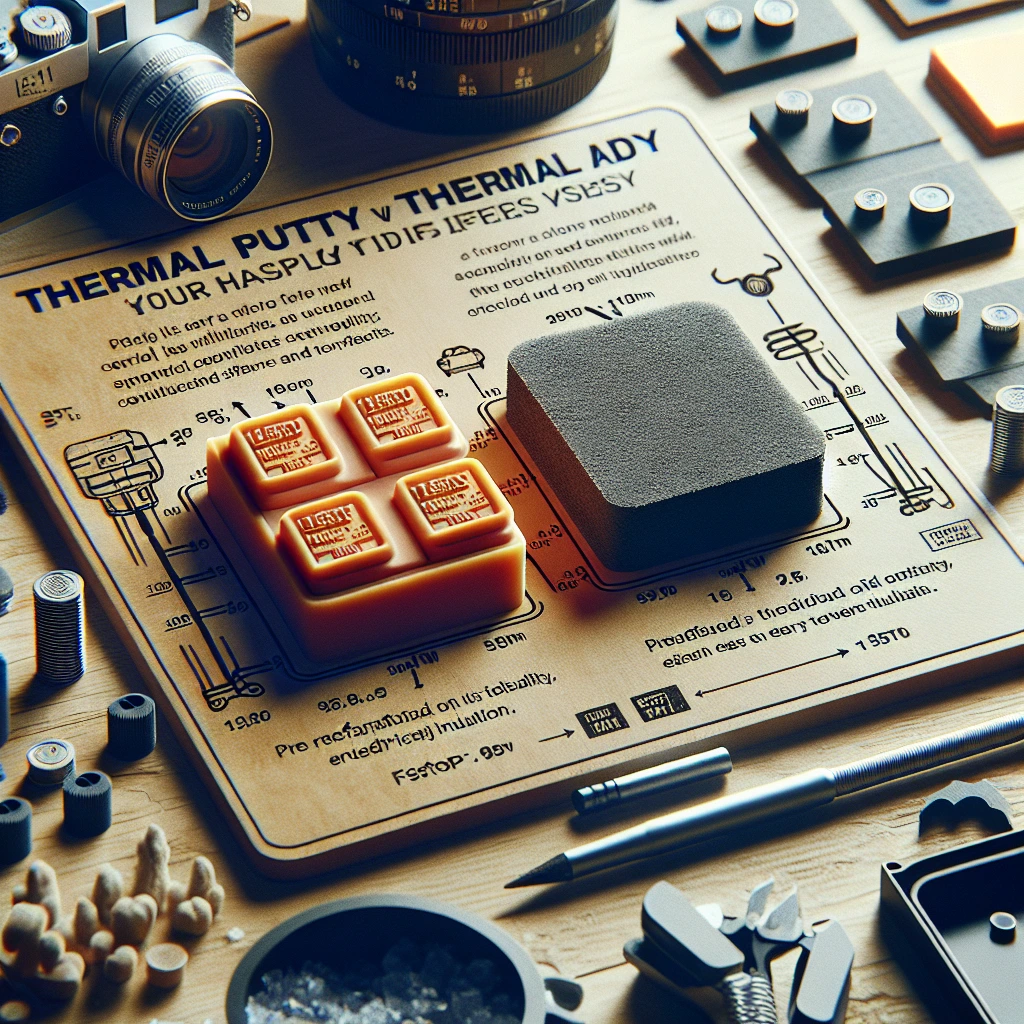When it comes to managing heat in electronic devices, choosing the right thermal interface material (TIM) is crucial. Among the most common TIMs are thermal tape, thermal paste, and thermal pads. Each has unique properties and applications that make them suitable for different scenarios. Here’s a comprehensive comparison and analysis of these three materials.
- Product Catalog

Table of Contents
Thermal Tape
Characteristics and Applications:
Thermal tape, also known as double-sided thermal adhesive tape, combines high thermal conductivity with strong adhesive properties. It is designed to fill gaps between heat sources and metal components, effectively dissipating heat generated by electronic products. Thermal tape is often reinforced with materials like glass fiber or polyimide to enhance its strength and dielectric breakdown voltage.
Advantages:
- Ease of Use: Thermal tape is easy to apply; simply cut to size, peel off the backing, and stick it onto the surfaces.
- Adhesive Functionality: It eliminates the need for mechanical fasteners like screws, simplifying assembly processes.
- Versatility: Suitable for small chips on motherboards, LED lamps, and other small electronic components.
Disadvantages:
- Limited Reusability: Once applied and removed, thermal tape generally cannot be reused.
- Adhesive Residue: Removal can sometimes leave adhesive residue on components.
Thermal Paste
Characteristics and Applications:
Thermal paste, also known as thermal grease or compound, is a thermally conductive material used to fill air gaps between heat-generating components and heat sinks. It is particularly effective in maximizing heat transfer by filling microscopic imperfections on surfaces.
Advantages:
- High Thermal Conductivity: Offers superior heat transfer capabilities compared to other TIMs.
- Flexibility: Can be applied as a thin layer to conform to uneven surfaces, making it ideal for CPUs and GPUs.
- Cost-Effective: Generally less expensive than thermal pads.
Disadvantages:
- Application Complexity: Requires careful application to avoid mess and ensure even coverage.
- Maintenance: Can dry out over time, necessitating periodic reapplication.
Thermal Pads
Characteristics and Applications:
Thermal pads are pre-formed solid materials that provide a consistent thickness for uniform pressure distribution between components. They are commonly used in applications where ease of use and electrical insulation are important.
Advantages:
- Ease of Installation: Pre-cut and easy to handle, reducing the risk of application errors.
- Electrical Insulation: Provides an added layer of protection by preventing electrical conductivity between components.
- Non-Drying: Unlike thermal paste, thermal pads do not dry out over time, offering a longer-term solution without frequent maintenance.
Disadvantages:
- Lower Thermal Conductivity: Typically offers less efficient heat transfer compared to high-quality thermal pastes.
- Single Use: Once removed, they cannot be reused and must be replaced with new pads.
Conclusion
Choosing between thermal tape, thermal paste, and thermal pads depends on specific application requirements:
- 🔗Thermal Tape is ideal for applications requiring both adhesion and heat dissipation without mechanical fasteners.
- 🔗Thermal Paste excels in high-performance scenarios where maximum heat transfer is needed but requires careful application.
- 🔗Thermal Pads offer simplicity and insulation benefits but may fall short in scenarios demanding high thermal conductivity.
Ultimately, the decision should be based on factors such as ease of use, thermal performance needs, electrical insulation requirements, and cost considerations. Each material has its strengths and weaknesses, making them suitable for different applications in electronic device manufacturing.
LiPOLY TIM Technology : Thermal Solutions












